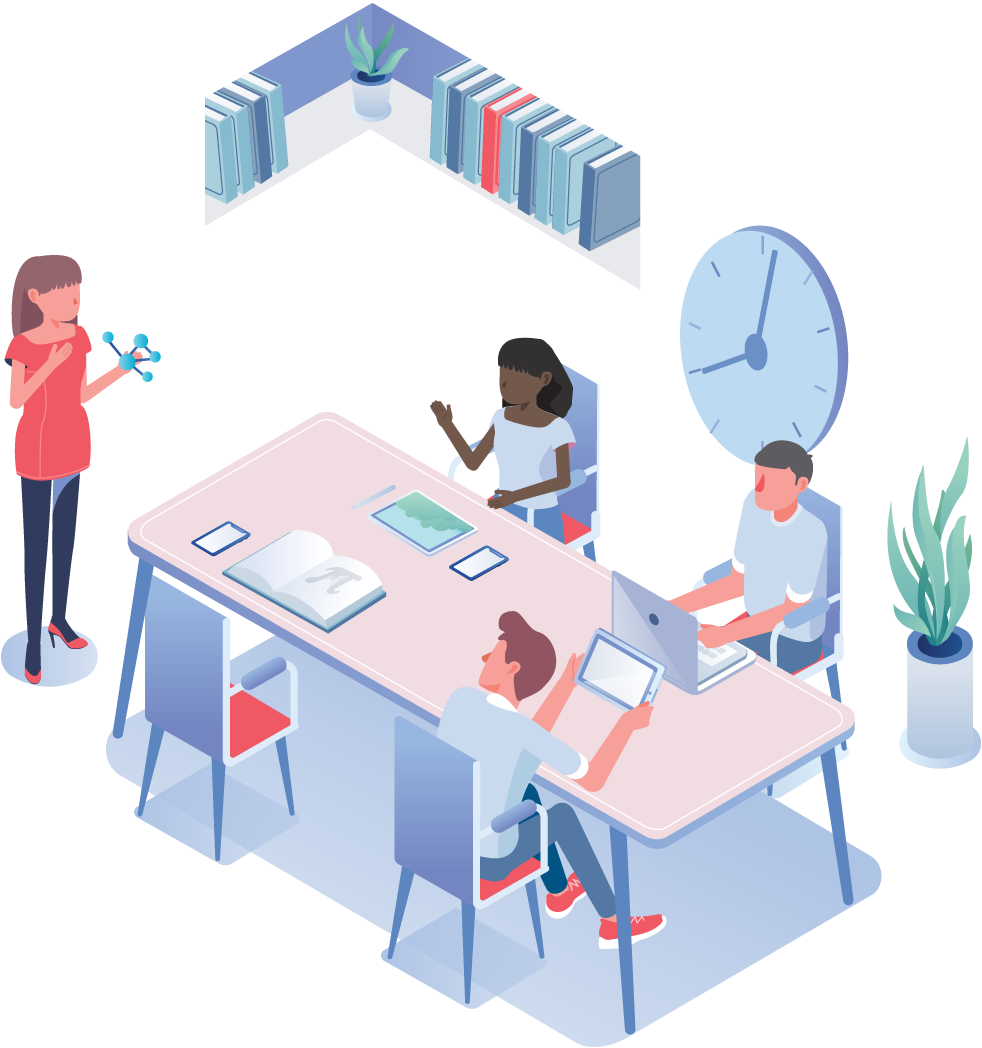Reading comprehension is a fundamental skill tested on many standardized exams. However, the unique structure and challenging nature of reading sections can overwhelm many test-takers. The good news is that with the right strategies and approach, you can improve your reading comprehension skills and boost your performance on tests.
Here, we’ll explore a variety of strategic reading techniques to help you excel in reading sections on tests. Whether you’re preparing for college entrance exams, professional certifications, or any other standardized tests that include reading comprehension sections, these strategies will equip you with the tools you need to navigate passages, answer questions accurately, and manage your time effectively.
Types of Questions on Standardized Tests
Reading sections on standardized tests can be tricky due to question wording. Understanding question types beforehand so that you know what to expect helps avoid confusion. Here are 8 common question types:
1) Big Picture/Main Point
These questions require you to grasp the central idea or main purpose of the passage. Focus on identifying the main argument, theme, or message conveyed by the author.
2) Little Picture/Detail
Asks about specific details or information in the passage (e.g. “What does this sentence mean?”). Pay attention to specific sentences, phrases, or words that provide relevant information or support the author’s claims.
3) Inference
Inference questions assess your ability to draw logical conclusions based on the information presented in the passage. Analyze the given facts, consider implicit meanings, and make logical deductions to determine the right answer.
4) Vocabulary in Context
Tests your understanding of vocabulary words within the context of the passage. Look for clues in the surrounding sentences to infer the meaning of unfamiliar words.
5) Function
Function questions examine how specific sentences, phrases, or paragraphs relate to the passage’s overall structure or purpose. Consider the role played by each element in conveying the author’s message or supporting the main argument.
6) Author Technique
These questions explore the author’s writing style, tone, or literary devices used in the passage. They may also ask you to compare the passage to a different one. Look for clues in the author’s choice of words, sentence structure, and overall tone to answer these questions accurately.
7) Evidence Support
Asks you to locate and provide evidence from the passage to support or justify a previous answer. These often review back to other types of questions already asked on the test (e.g. “Which choice provides the best evidence to the previous question?”). Carefully review the question and refer back to the relevant portion of the passage to find supporting information.
8) Data Analysis
These often accompany passages that include charts, graphs, or other visual representations. They assess your ability to interpret and analyze the data presented in conjunction with the passage.
By understanding these question types, you can approach reading comprehension tests with a clear strategy. Practice with sample questions of each type to hone your skills and develop a familiarity with the range of questions you may encounter.
Steps for Reading Passages on Standardized Tests
1) Preview the Questions
Before diving into the passage, take a moment to read through the questions. This provides a roadmap of what to look for, allowing you to read more purposefully and efficiently locate the answers or any relevant information during your focused reading.
2) Pay Attention to the Introduction
Read the informational blurb that introduces the passage. This provides valuable context about the passage’s tone, style, and purpose and sets the stage for better comprehension.
3) Strategize Your Answering Approach
Remember, you can answer the questions in any order. Prioritize your answers by thinking through them before considering the options. This approach helps you avoid falling for multiple-choice traps. Consider leaving “main purpose” questions for last, as a deeper understanding of the passage will aid in answering them accurately.
Strategies for Extracting Key Information from Passages
Extracting key information from passages is essential for answering reading comprehension questions accurately. Some strategies to help you identify and retain important details include:
1) Skim for Structure
Begin by skimming the passage to get a sense of its structure, including headings, subheadings, and topic sentences. This provides an overview of the passage’s organization and helps you locate any necessary information.
2) Focus on Topic Sentences
Pay close attention to the first sentence of each paragraph, as it often states the main idea or topic. Understanding the main points of each paragraph helps you grasp the passage’s overall message.
3) Take Note of Transition Words
Transition words like “however,” “in contrast,” or “moreover” signal shifts in ideas or the relationships between different parts of the passage. Pay attention to these words as they guide your understanding of the author’s argument or progression of ideas.
4) Mark Unknown Terms or Phrases
Circle unfamiliar vocabulary or concepts encountered in the passage. Later, you can refer back to these circled terms to ensure you understand their meaning within the context of the passage.
The Power of Elimination: Using Smart Guessing Techniques
When faced with challenging questions or unfamiliar content, smart guessing techniques can help you make educated guesses and increase your chances of selecting the correct answer.
1) Identify Extreme or Absolute Options
Pay attention to answer choices that include extreme language such as “always,” “never,” or “completely.” These options are often less likely to be correct, as they rarely reflect the nuanced nature of the passage or the question being asked.
2) Cross Out Incorrect Choices
Read each answer choice carefully and eliminate the options that are clearly incorrect. Narrow down your options and increase the probability of choosing the right answer by eliminating choices.
3) Use Contextual Clues
Even if you’re unsure about the correct answer, examine the context of the question and the surrounding information in the passage. Look for clues that may help you eliminate improbable choices or identify options that align more closely with the given context.
4) Prioritize Evidence-Based Guesses
If you can find supporting evidence in the passage for a particular answer choice, it is more likely to be correct. Base your guess on the information provided in the text rather than relying solely on your intuition.
Time Management Tips for Reading Comprehension on Tests
Time management plays a crucial role in successfully completing the reading comprehension section within the allotted time. To manage your time effectively:
1) Set a Time Limit for Each Passage
Allocate a general amount of time for each passage, considering the number of questions and the passage’s length. This helps you stay on track and ensures that you have sufficient time for all the passages. However, don’t spend too much time watching the clock! It’s okay if some passages take a little more time than others.
2) Focus on Key Information
While reading the passage, pay attention to key information, main ideas, and supporting details. Avoid getting caught up in unnecessary details that are not directly related to the questions. Stay focused on what’s essential to save time.
3) Highlight, Underline, or Circle Key Information
Underline or highlight crucial information in the passage that is relevant to the questions, such as significant details, supporting evidence, or crucial facts. This visual aid helps you quickly locate and reference important details when answering the questions.
By optimizing your understanding, time allocation, and accuracy and implementing effective time management strategies, you can improve reading comprehension skills and approach the test with confidence and efficiency.
Practicing with Sample Tests: Sharpening Your Strategic Reading Skills
Regular practice with sample tests is a valuable strategy for sharpening your reading comprehension skills and familiarizing yourself with the format and types of questions typically found on tests. Here is why practicing with sample tests is beneficial specifically for reading sections:
1) Analyzing Answer Explanations
Sample tests often provide answer explanations or key insights into why certain answer choices are correct or incorrect. By reviewing these explanations, you gain valuable insights into the reasoning and thought processes required to answer questions accurately.
2) Understanding Test Format
Sample tests help you become familiar with the structure and format of reading comprehension sections. This includes the number of passages, types of questions, and time constraints. By practicing with sample tests, you can anticipate the test’s layout and better allocate your time.
3) Identifying Strengths and Weaknesses
Sample tests allow you to assess your strengths and weaknesses in reading comprehension. By reviewing your performance, you can identify areas that require improvement and focus your efforts on enhancing those specific skills.
4) Acclimating to Test Conditions
Taking sample tests under timed conditions replicates the test environment and helps you develop a sense of pacing. This practice improves your ability to manage time effectively and complete the reading comprehension section within the allocated time frame.

Basic Reading Comprehension Tips
Here are some basic tips to increase reading comprehension at home. Reading comprehension is an incredibly important skill to have in life, outside of tests and school. If you are struggling with reading comprehension or simply feel like you could use some improvement, try out some of these tips!
- Choose something you’re interested in and find books or articles on that topic
- Read for pleasure!
- Understand and re-evaluate your current reading weaknesses (When does your attention lag? Why? Is it the subject matter, do you get tired quickly, etc. What can you do to change that?)
- Read texts below your reading level to help create a foundation
- Break up reading into smaller sections
- Read out of order (if you’d like)
- Pace yourself
- Eliminate distractions when reading
- Look up words you don’t understand to improve vocabulary
- Use context clues
- Look for the main idea
- Come up with questions while you’re reading
- Write a summary of what you read after you’re finished
- If you get confused, stop and try to summarize what you just read
- Re-read text to ensure understanding
- Discuss the text with someone
- Read aloud (to yourself, a friend, a pet, anyone!)
SEE ALSO: 20 Test-Taking Strategies to Boost Your Confidence
Sources:
No Pain, High Gain: Test Prep Tips for Reading Comprehension and Math | Scholastic
7 Simple Strategies To Improve Your Reading Comprehension | Indeed.com
How to Improve Reading Comprehension: 8 Expert Tips | PrepScholar
The Best Way to Read the Passage in SAT Reading | PrepScholar
Need more personalized recommendations?
The above tips and recommendations are broad strokes on study tips. If you have further questions, feel free to contact us for a personal consultation. We look forward to helping you.
About MathTowne
MathTowne is a locally-based tutoring resource. We are here to support students through the key phases of their academic journey: middle school, the transition to high school, all four years of high school, and college preparation. Our staff has years of experience in creating personalized lesson plans for all of our students.

Yuki is a skilled educator with a degree in Chemistry from Carnegie Mellon University. She discovered her passion for teaching math after tutoring at an after-school program. With five years of tutoring experience, Yuki creates a supportive learning environment for students. Outside of tutoring, she enjoys trying new cuisines and playing piano.
